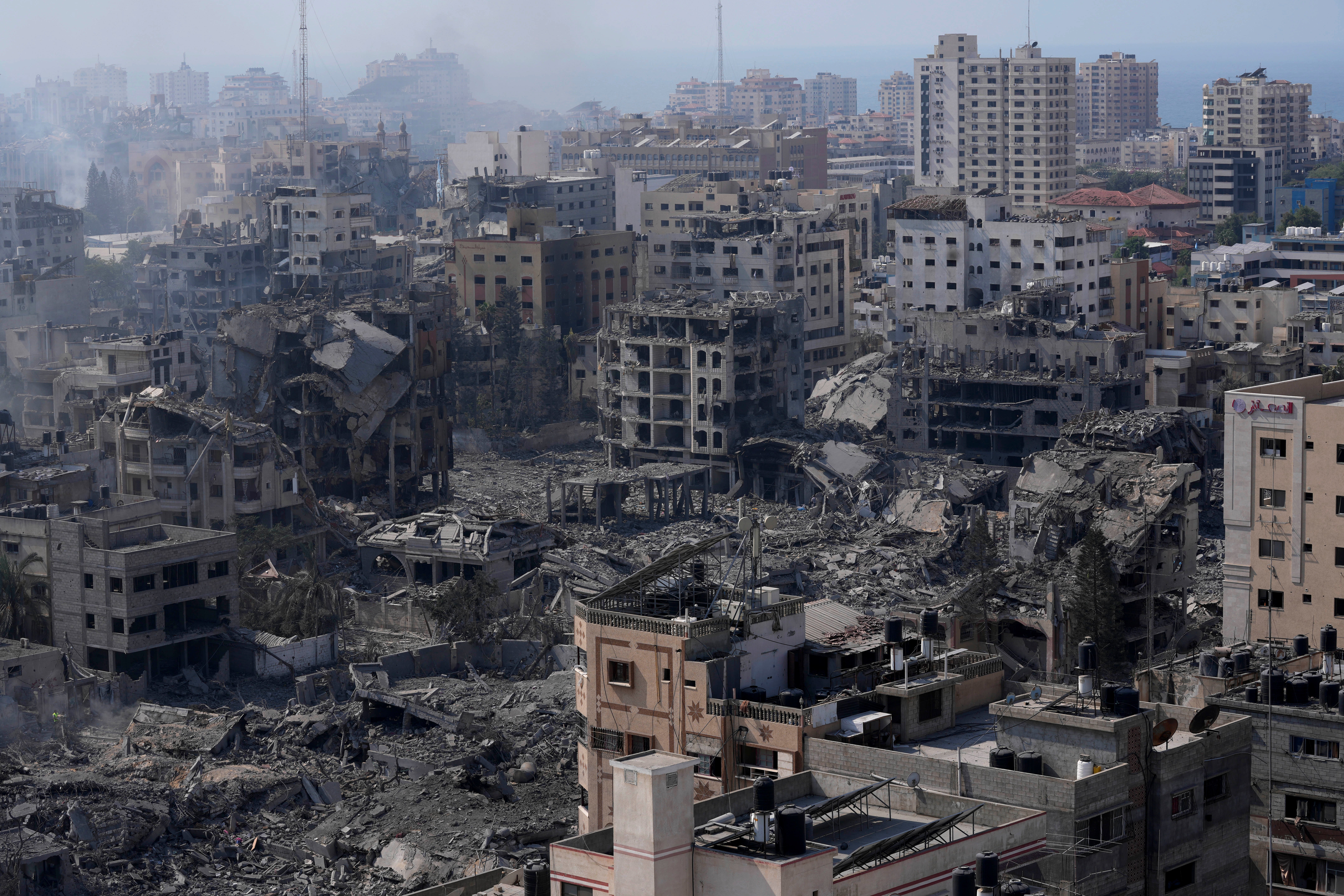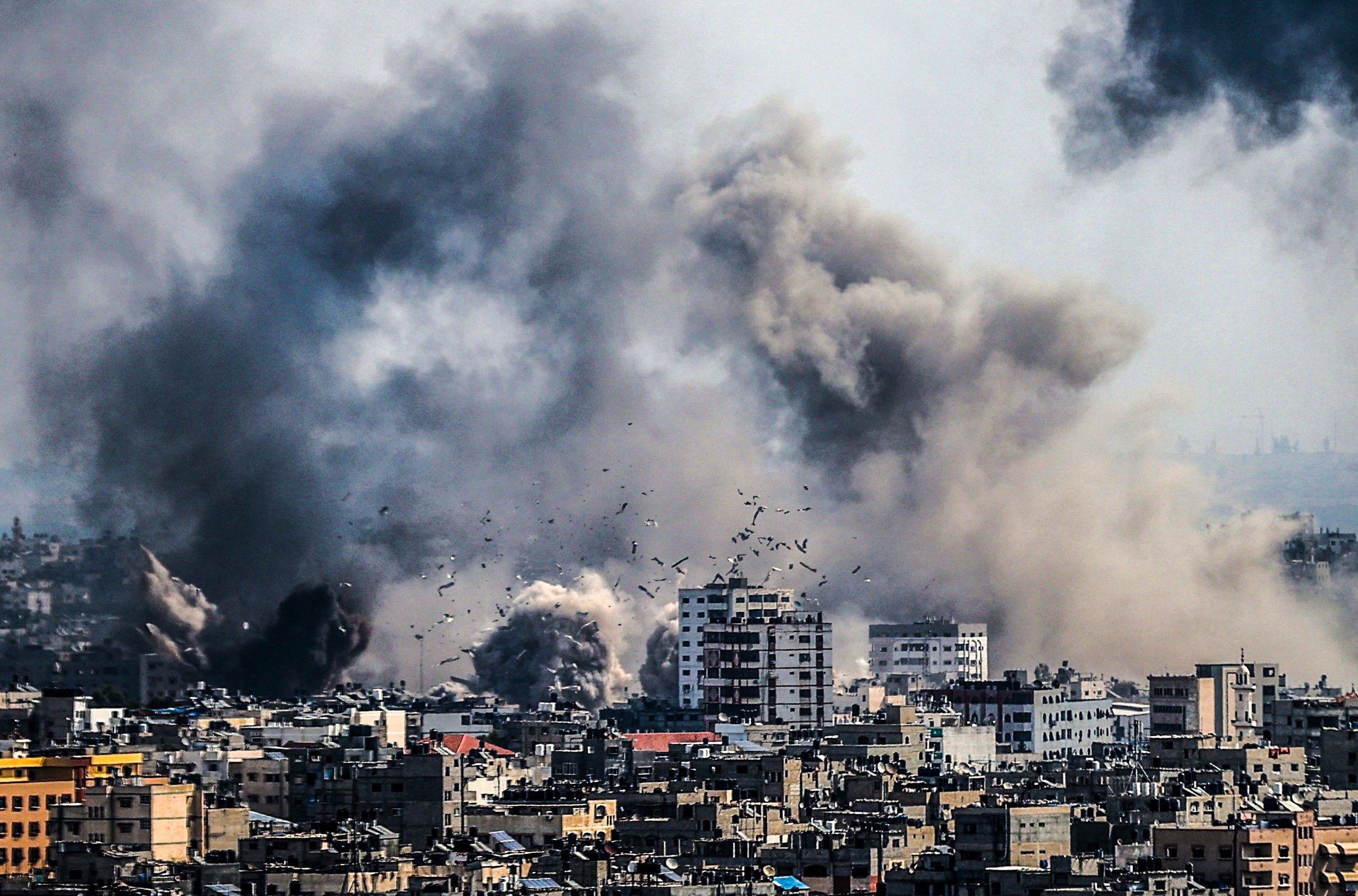‘Released all restraints’: What would a ground invasion of Gaza look like?
Previous incursions have caused thousands of civilian casualties. This time could be worse, Richard Hall writes

Your support helps us to tell the story
From reproductive rights to climate change to Big Tech, The Independent is on the ground when the story is developing. Whether it's investigating the financials of Elon Musk's pro-Trump PAC or producing our latest documentary, 'The A Word', which shines a light on the American women fighting for reproductive rights, we know how important it is to parse out the facts from the messaging.
At such a critical moment in US history, we need reporters on the ground. Your donation allows us to keep sending journalists to speak to both sides of the story.
The Independent is trusted by Americans across the entire political spectrum. And unlike many other quality news outlets, we choose not to lock Americans out of our reporting and analysis with paywalls. We believe quality journalism should be available to everyone, paid for by those who can afford it.
Your support makes all the difference.The Israeli army is making preparations for a ground invasion of Gaza that will likely eclipse all previous offensives in scale, ferocity and civilian harm.
Following the brutal massacre of more than 1,200 Israelis by Hamas this weekend, Israel’s army has moved masses of tanks and soldiers to the perimeter of the densely populated Gaza Strip, evacuated its own civilians from border areas and called up 300,000 reservist troops.
“All the places that Hamas hides in, operates from, we will turn them into ruins," Israeli prime minister Benjamin Netanyahu said.
The Israeli government announced a “total siege” on the 42-km long territory, vowing to cut off power, water, fuel and food to the more than two million people who live there. The sole remaining access from Egypt shut down Tuesday after Israeli airstrikes hit near the border crossing.
Israeli officials have made clear that due to the severity of the Hamas attack, this incursion will strike deeper and harder than previous invasions of the territory. During a visit to the area near Gaza on Tuesday, Israel’s Defense Minister Yoav Gallant said he has “released all restraints” for Israeli troops in the coming fight against Hamas.
“They will regret this moment — Gaza will never return to what it was,” Gallant added.
Massive aerial bombardment
Israel has already begun preparing the way for its ground invasion with heavy aerial bombardment of Gaza, destroying entire city blocks and killing hundreds in the process. As of Tuesday evening, more than 1,100 Palestinians have been killed and 5,339 others injured by the strikes, according to the Palestinian Ministry of Health in Gaza.
The ministry has accused Israeli forces of deliberately targeting “civilian neighborhoods, health facilities, and notably, medical and rescue crews, as well as ambulance vehicles.”
Israel army spokesperson Lt. Col. Richard Hecht said that civilian buildings could be targeted if they are being used by Hamas. “In buildings where people are living there could be a weapons store… there could be a Hamas kingpin living there,” he said Tuesday.
The Associated Press reported that civilians in Gaza “struggled to find any safe area” on Wednesday as strikes “demolished entire neighbourhoods, hospitals ran low on supplies and the territory’s only power plant ran out of fuel.”
The bombardment has caused “mass displacement” within Gaza, according to the UN, with the total displacement now exceeding 263,934 people. Some 170,000 are seeking shelter in UN schools, it added.

Prominent British-Palestinian plastic surgeon Ghassan Abu Sitta said Gaza’s largest hospital al-Shifa is already “at capacity ” and they are being forced to improvise. He said he had to clean a teenage girl with 70 per cent surface burns using regular soap because the hospital is out of chlorhexidine, an antiseptic.
“I’ve been in Gaza during the 2009, 2012, 2014 and 2021 [wars] and this is the worst,” he told The Independent’s Bel Trew from Gaza City.
“The sheer number of wounded in the last 72 hours has completely overwhelmed the system. Al-Shiafa is at capacity,” he added.
Tunnels and urban fighting
Vastly outnumbered and outgunned, Hamas will likely stick to the hit-and-run tactics is has deployed in previous assaults. The group has used underground tunnels to surprise and attempt to outmaneouvre Israeli forces. It will deploy suicide bombers and IEDs to slow Israel’s advances.
The best clue for what Israel’s ground offensive will look like comes from its previous two incursions into the territory, in 2008/9 and 2014.
The Israeli army will continue to use heavy bombardment to clear a path for its ground forces entering the strip in the coming days. In 2008, when Israel invaded the Strip to end Hamas rocket fire, Israeli intelligence had a list of more than 600 major Hamas targets. On the first day, it launched airstrikes against 100 targets in a matter of minutes. The airstrikes were followed by the incursion of three infantry brigade task forces and one armoured task force.
The last time Israeli forces invaded Gaza, in 2014’s Operation Protective Edge, they faced the most severe resistance in Shuja’iya, a densely populated neighbourhood of Gaza City with some 90,000 residents. The Israeli army faced heavy urban fighting as Hamas fighters sprung up from tunnels and alleyways. In one battle, the Israeli army lost 13 soldiers in the space of eight hours.
As Israeli leaders warn that they will go further into Gaza than they have before, it is likely this conflict will feature the same kind of urban battles. It is also likely that in the years since 2014, Hamas has been able to rebuild some of its capacity and, as evidenced by the brutal operation last weekend, improved its tactics.
The 2014 operation lasted for two weeks and penetrated only a few miles into the strip. During that time more than 2,000 Palestinians were killed mostly civilians, as well as 66 Israeli soldiers, six Israeli civilians.
Hostages
Israel’s ground operation will no doubt be complicated by the more than 100 hostages taken during the Hamas attack and currently held by the group in unknown conditions — among them women, children and the elderly.
Israel has so far given no indication that it will negotiate with Hamas over their fate, and insisted the presence of captives in Gaza would not slow down their efforts.
"We have an unprecedented number of hostages," Israeli Ambassador to the US, Gilad Erdan told CNN, estimating the number was between 100 and 150.
"We expect the Red Cross, we expect all international organizations to focus on these hostages and how they are treated and that they receive treatment according to international law, but it’s not going to stop us, prevent us from doing what we need to do in order to secure the future of Israel.”
But if Israel receives specific information about the location of hostages in certain areas, it may be forced to hold back.
Hamas, meanwhile, has threatened to kill hostages if Israel targeted civilians “without prior warning.”
‘An already dire situation’
Amid the mass of unknowns about how the coming war will play out, one thing is certain: Civilians in Gaza will pay a heavy price.
Hundreds have already been killed before the battle has even begun. In 2008, more than 1,400 Palestinians were killed in Israel’s 22-day invasion. The 2014 invasion saw the death of 2,000 civilians in Gaza over two weeks of heavy fighting and bombardment — half that number of Palestinians have already died in just a few days and the ground invasion has yet to begin.
The humanitarian situation in the Gaza Strip was already dire before the latest outbreak of hostilities. UN Secretary-General António Guterres said in a statement on Monday that he was “deeply distressed” by the announcement from Israel that it will impose a full siege.
“The humanitarian situation in Gaza was extremely dire before these hostilities. Now, it will only deteriorate exponentially,” he said.



Join our commenting forum
Join thought-provoking conversations, follow other Independent readers and see their replies
Comments